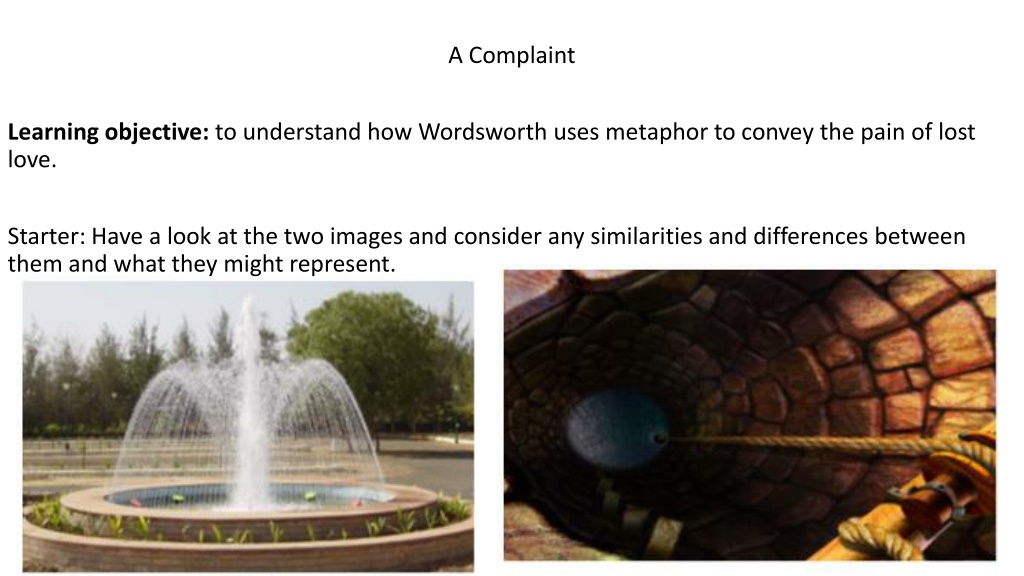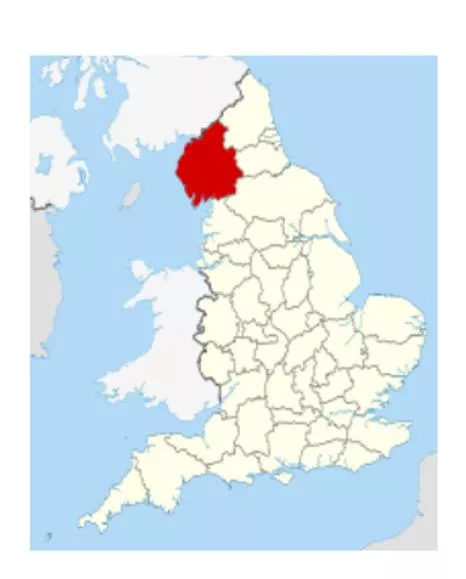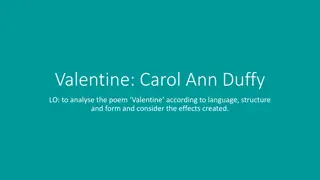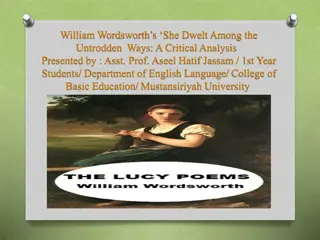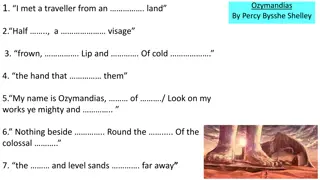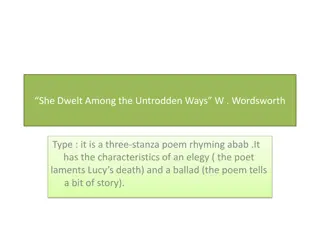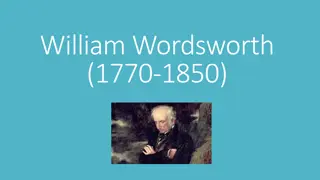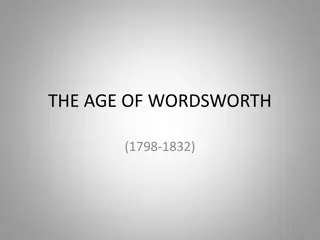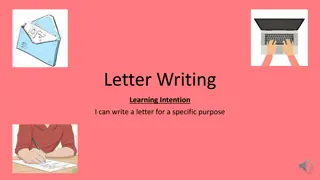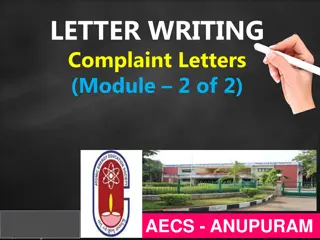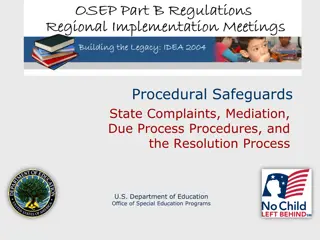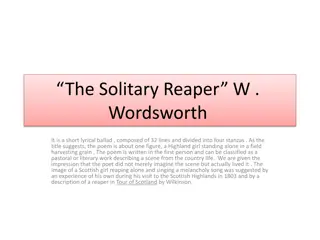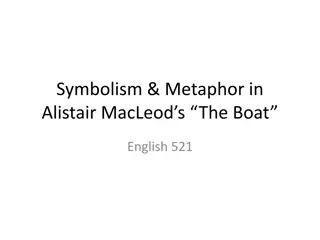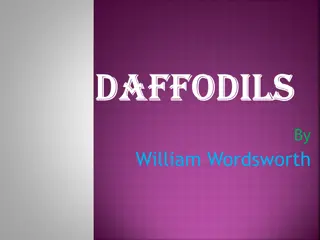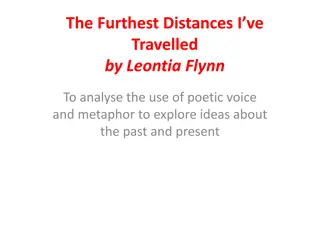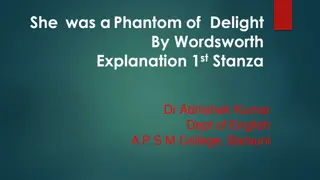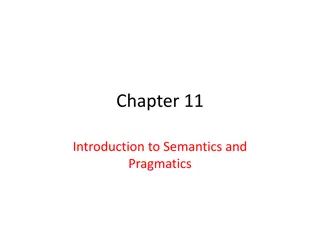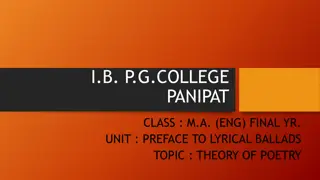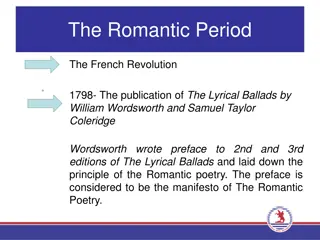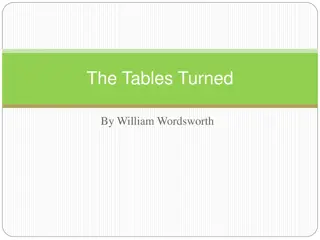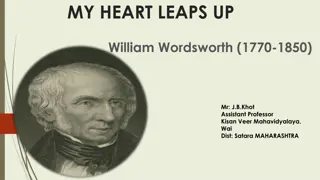Exploring Wordsworth's Use of Metaphor in "A Complaint" Poem
Dive into an analysis of Wordsworth's poem "A Complaint" to unravel how he utilizes metaphor to express the anguish of lost love. Discover the contextual background, poetic structure, and thematic elements woven throughout the Romantic piece. Explore the imagery of water, the emotional tone, and the potential exploration of a relationship's dissolution that resonates with raw intensity.
Download Presentation

Please find below an Image/Link to download the presentation.
The content on the website is provided AS IS for your information and personal use only. It may not be sold, licensed, or shared on other websites without obtaining consent from the author. Download presentation by click this link. If you encounter any issues during the download, it is possible that the publisher has removed the file from their server.
E N D
Presentation Transcript
A Complaint Learning objective: to understand how Wordsworth uses metaphor to convey the pain of lost love. Starter: Have a look at the two images and consider any similarities and differences between them and what they might represent.
A Complaint Learning objective: to understand how Wordsworth uses metaphor to convey the pain of lost love. Introduction: Context: This is the fourth and final Romantic poem you will be studying from this collection. Contextual points: In publishing his poetry collection, Lyrical Ballads, in 1802, alongside co-author, Samuel Taylor Coleridge, Wordsworth said they were placing the spontaneous overflow of emotions at the heart of their work. This lay the foundations for later Romantic poets, who would emphasise pure emotion and use emotion as a unifying theme in their writing. This created a new Romantic sensitivity in English literature. After three years abroad in Malta, Coleridge returned to visit his once-close friend, Wordsworth, in 1806, and everyone present felt the change in the two poets relationship. Might this be the subject of this poem? Does it necessarily have to be a romantic break-up that A Complaint is about?
A Complaint Learning objective: to understand how Wordsworth uses metaphor to convey the pain of lost love. First reading: Listen to Audio A4. Consider the poem s structure as you listen. You should be confident enough to recognise the regular rhyme scheme as well as the use of the form.
Glossary Glossary sestet a stanza of six lines simile a phrase used to make a description more vivid by using like or as to compare two things
Glossary Glossary metaphor or as Direct comparison between two things without using like extended metaphor variations on a single metaphor that continue throughout a poem or short story
A Complaint Learning objective: to understand how Wordsworth uses metaphor to convey the pain of lost love. Reread the poem and identify why this could be considered a Romantic poem. What aspect of a relationship does it explore? What is the tone of the poem? What metaphorical imagery has been used? What is the theme of the poem? There are some possible answers on the next slide.
A Complaint Learning objective: to understand how Wordsworth uses metaphor to convey the pain of lost love. Reread the poem and identify why this could be considered a Romantic poem. What aspect of a relationship does it explore? Lost love? What is the tone of the poem? An emotional tone. What metaphorical imagery has been used? Imagery associated with water. What is the theme of the poem? A break-up of a relationship that still feels raw.
A Complaint Learning objective: to understand how Wordsworth uses metaphor to convey the pain of lost love. Development: Exploring metaphor: What is an extended metaphor? Make notes/brainstorm the suggested meaning of the following metaphorical images: Your love hath been, nor long ago,/A fountain at my fond heart s door A comfortless and hidden well Write out a short response to the quote. For example, Love is like a fountain because
A Complaint Learning objective: to understand how Wordsworth uses metaphor to convey the pain of lost love. Use Worksheet A4.2 to record your thoughts on the poem s tone and imagery. Consider the following: How do language choices and/or voice create a sense of tone (e.g. consider the inclusion of words such as comfortless and silence)? How does the poet s use of imagery add to the intended meaning of the poem? Consider his use of the extended metaphor. When considering the tone and imagery used by the poet, how does this develop the poem s themes?
